SS Exeter Archival Collection
Exeter (1931) American Export Lines
Built by New York Shipbuilding Corp., Camden, N. J. Tonnage: 9,360. Dimensions: 450' x 61'. Propulsion: Single-screw, 16 knots. Steam turbines. Masts and Funnels: Two masts and one funnel. Renamed Edward Rutledge (1941). Fate: Torpedoed and sunk near Casablanca, November 12, 1942. Sister ships: Excalibur, Excambion and Exochorda.
Exeter (1945) American Export Lines
Built by Bethlehem Shipbuilding Corp., Sparrows Point, Md. Tonnage: 9,644. Dimensions: 451' x 66' (473' o.l.). Propulsion: Single-screw, 18 knots. Steam turbines. Masts and Funnels: Two masts and one funnel. Passengers: 124 first. Ex-Shelby (1948). Sister ships: Excalibur, Excambion and Exochorda.
Return to Content Links
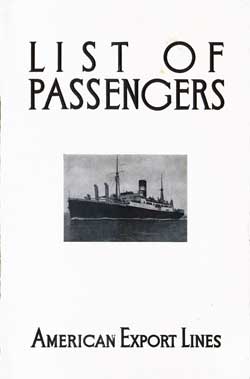
1932-06-28 SS Exeter Passenger List
- Steamship Line: American Export Lines
- Class of Passengers: One
- Date of Departure: 28 June 1932
- Route: New York to Alexandria via Gibraltar, Marseilles, Jaffa, Haifa, Beirut, and Naples
- Commander: Captain C.C. Decker
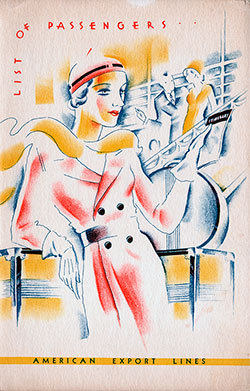
1936-03-24 SS Exeter Passenger List
- Steamship Line: American Export Lines
- Class of Passengers: One
- Date of Departure: 13 April 1936
- Route: Beirut for Boston and New York
- Commander: Captain S. F. Ransone
Return to Content Links
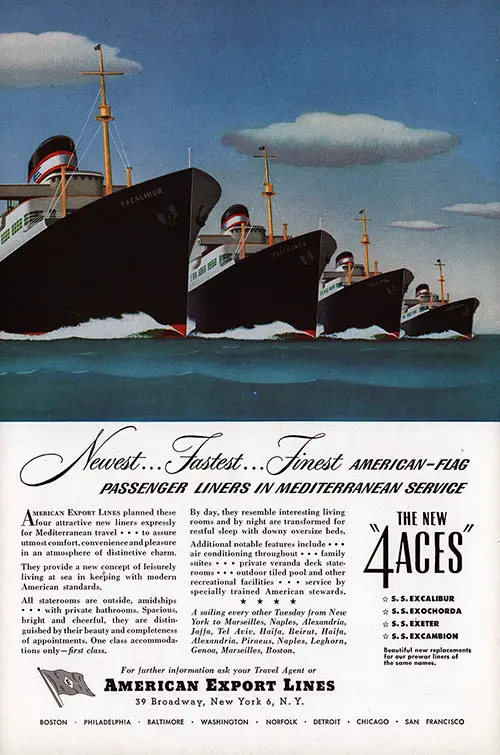
American Export Lines 1948 Advertisement for The New 4 Aces: SS Excalibur, SS Exochorda, SS Exeter, SS Excambion. | GGA Image ID # 15f5446f12
Newest... Fastest... Finest American-Flag Passenger Liners in Mediterranean Service
American Export Lines planned these four attractive new liners expressly for Mediterranean travel • • • to assure utmost comfort, convenience and pleasure in an atmosphere of distinctive charm.
They provide a new concept of leisurely living at sea in keeping with modern American standards.
All staterooms are outside, amidships • • • with private bathrooms. Spacious, bright and cheerful, they are distinguished by their beauty and completeness of appointments. One class accommodations only — first class.
By day, they resemble interesting living rooms and by night are transformed for restful sleep with downy oversize beds.
Additional notable features include • • • air conditioning throughout • • • family suites • • • private veranda deck staterooms • • • outdoor tiled pool and other recreational facilities • • • service by specially trained American stewards.
★ ★ ★ ★
A sailing every other Tuesday from New York to Marseilles, Naples, Alexandria, Jaffa, Tel Aviv, Haifa, Beirut, Haifa, Alexandria, Piraeus, Naples, Leghorn, Genoa, Marseilles, Boston.
The New "4 Aces"
- S.S. EXCALIBUR
- S.S. EXOCHORDA
- S.S. EXETER
- S.S. EXCAMBION
Beautiful new replacements for our prewar liners of the same names.
Return to Content Links
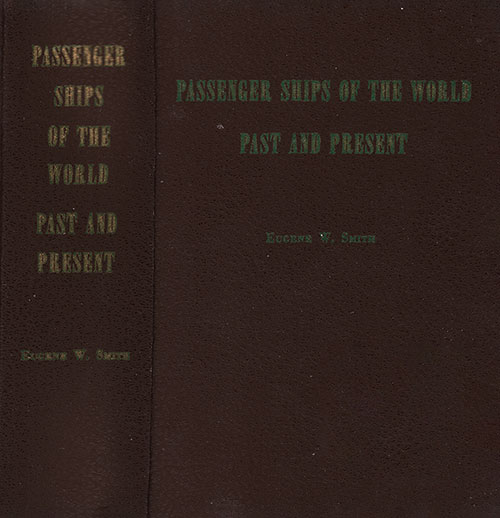
Passenger Ships of the World - 1963
🎓 “A Global Voyage Through Steamship History for Historians, Genealogists, and Maritime Enthusiasts”
Eugene W. Smith’s Passenger Ships of the World – Past and Present (1963) is a masterfully curated encyclopedic reference that charts the rise, peak, and transformation of ocean-going passenger ships through nearly two centuries. Expanding upon his earlier Trans-Atlantic and Trans-Pacific works, Smith offers a global maritime panorama that includes ships serving the Americas, Africa, Europe, Asia, Australia, and Oceania, as well as Canal routes and California-Hawaii shuttle lines.
🧭 This book is an essential resource for:
- Maritime historians seeking design evolution and fleet data
- Genealogists tracing voyages and shipping lines
- Educators and students studying transoceanic migration and tourism
- Ship modelers, naval architects, and enthusiasts interested in dimensions, tonnage, and speed
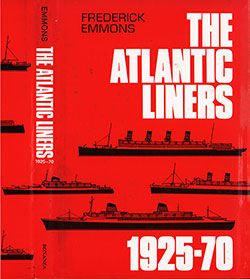
THE ATLANTIC LINERS will be cherished by all the millions of Americans who love the sea. Frederick Emmons sketches the histories of every ocean liner that sailed between the United States and Europe between 1925 and 1970.

US Steamships: A Picture Postcard History
Over many years, Postcards were collected for the message, history, and the scene. As a result of these collecting interests, we have a valuable source of information relating to many subjects, including steamships, from a historical, technical, and artistic perspective. The Postcards in this book provide a chronological history of U.S. Steamships.
Return to Content Links
